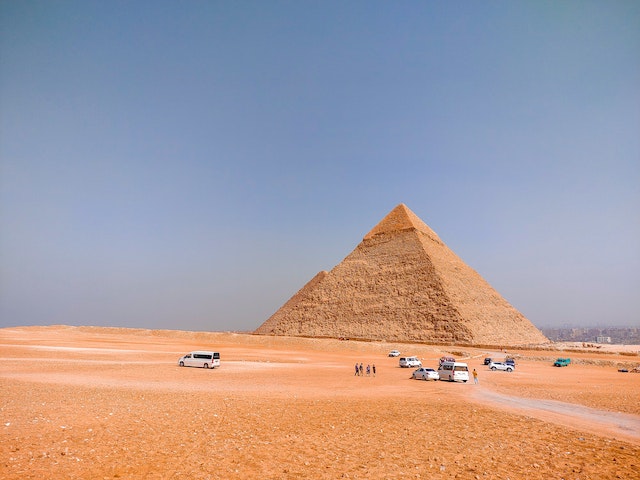Cheops Pyramid Egypt
The Great Pyramid of Giza, often referred to as the Pyramid of Khufu or Cheops Pyramid Egypt , is an extraordinary monument that has captured the imaginations of people for millennia. Located on the Giza Plateau, just outside Cairo, Egypt, this colossal structure is not only a remarkable engineering achievement but also a repository of mysteries, secrets, and historical significance. Here, we delve into the details and unveil some of the enduring secrets of the Great Pyramid:
Pyramid of Giza
Construction and Purpose
- The Great Pyramid is thought to have been built during the Fourth Dynasty of the Old Kingdom of Egypt, around 2580-2560 BCE.
- It served as a monumental tomb for Pharaoh Khufu (or Cheops), an ambitious and powerful ruler of ancient Egypt. It was constructed as a final resting place and a symbol of his divine kingship.
Architectural Significance:
- The Great Pyramid was the tallest man-made structure on Earth for over 3,800 years, reaching an original height of approximately 146.6 meters (481 feet).
- It was originally encased in smooth, white Tura limestone casing stones that reflected sunlight, giving it the ancient name “Ikhet,” which means “Glorious Light.”
Interior Structure:
- The pyramid’s inner structure is a complex network of chambers and corridors, including the King’s Chamber, Queen’s Chamber, and a Grand Gallery.
- The King’s Chamber, with a red granite sarcophagus, is believed to have held Pharaoh Khufu’s remains.
Construction Theories:
- The exact methods used to build the Great Pyramid remain a subject of debate. Various theories range from the use of ramps to advanced construction techniques.
- The precision with which the massive stones were cut and fitted together has baffled historians and architects.
Secrets and Mysteries:
- The purpose of the small shafts inside the King’s and Queen’s Chambers continues to intrigue experts. Some suggest they may have been part of a ritualistic or symbolic design.
- The accurate alignment of the Great Pyramid to the cardinal points has led to theories about its potential astronomical or religious significance.
- The use of hieroglyphic markings in hidden chambers has sparked interest, with some researchers suggesting undiscovered treasures or hidden knowledge within the pyramid.
Legacy and UNESCO World Heritage Site:
- The Great Pyramid of Giza is an enduring symbol of ancient Egypt and is part of the Giza Pyramid Complex, which includes the Pyramid of Khafre and the Pyramid of Menkaure, as well as the Great Sphinx.
- This remarkable site is recognized as a UNESCO World Heritage Site, celebrating its historical and architectural significance.
Read More




